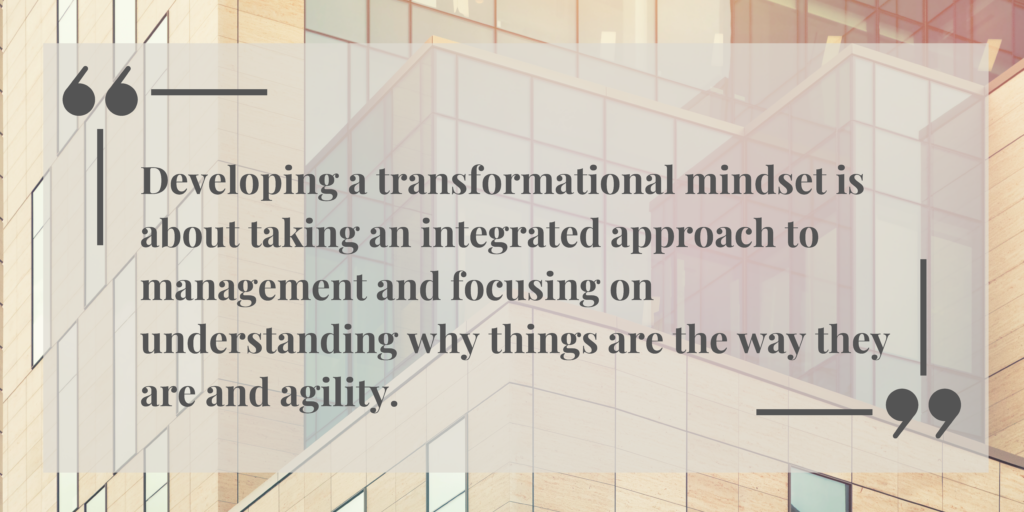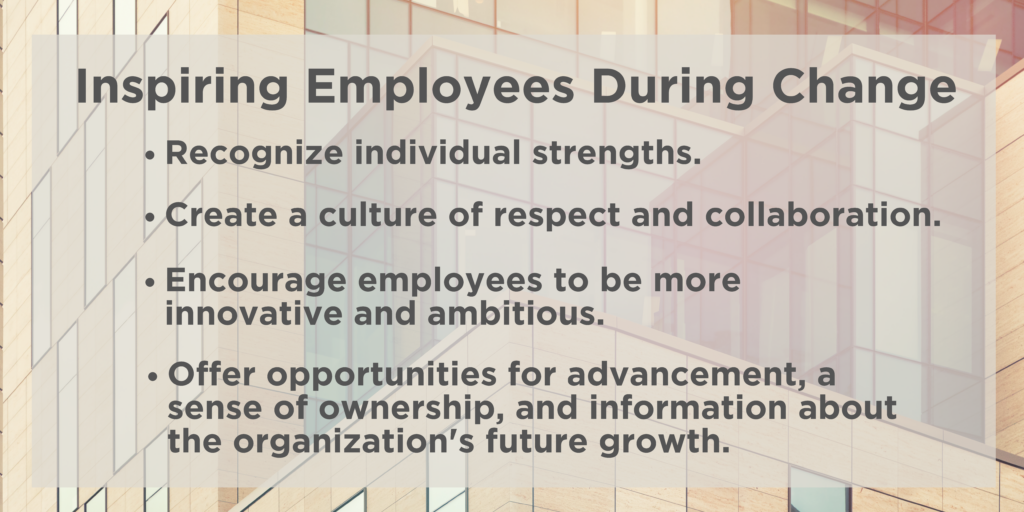According to Duke Corporate Education, we live in a VUCA world (volatile not stable, uncertain not predictable, complex not simple, and ambiguous not clear). So, as leaders, how do we deal with the volatility, uncertainty, complexity, and change of our current world? One way is through adopting a transformational mindset.

What Is Transformational Mindset?
As opposed to legacy mindset, which “is shaped by the belief that power, success, knowledge and best practice from the past is enough to ensure we survive and thrive in the future,” transformational mindset allows leaders “to engage fully in the dramatic changes in our external environment, rather than attempting to ignore, repress, or deny them.” Going further, this mindset values ownership and acceptance of change and uncertainty as powerful catalysts for innovation.
Transformational Mindset in Leadership
While most of us would like to think of change as a technological process, the reality is that it involves mindsets and strategies. As the world becomes more chaotic, leaders must be able to respond quickly to new ideas and change their mindsets accordingly. Developing a transformational mindset is about taking an integrated approach to management and focusing on understanding why things are the way they are and agility. By adopting this mindset, leaders are more likely to be open-minded to new ideas and embrace change.

The transformational mindset of a leader determines their leadership style and decision-making tactics when faced with challenges. Leaders who embody a transformational mindset see success in any situation and focus on finding solutions rather than taking failure personally. The transformational mindset also fosters a growth mindset within the culture of the organization.
A leader who is transformational is someone who challenges the status quo, inspires innovative thinking, and emphasizes opportunities for growth. This type of leader also gives their team a deep sense of purpose and high standards. A transformational leader inspires employees to take the leap and be self-disciplined while removing the fear factor from their work.
Inspiring Employees During Change
If you want to create an environment where everyone has a voice, you must focus on employee motivation. While motivation is an important part of fostering organizational success, it’s also critical to consider the individual needs of each employee. Fortunately, there are many effective ways to motivate employees when transitioning to a transformational mindset. Below, we’ll go over some of these methods. You’ll be surprised at how much impact they can make.
Recognize individual strengths. Recognize and reward star performers. If you don’t, they’ll eventually realize their hard work isn’t appreciated, and their motivation will drop. Motivate them by acknowledging their contributions. Reward them for their efforts. If you don’t recognize them, they’ll become discouraged and will seek other work. And what organization wants to lose hard-working and dedicated employees when they could be retained by a few implementable changes?
Create a culture of respect and collaboration. Transformative leaders focus on culture, team respect, and a collaborative environment. By creating a culture that encourages collaboration, innovation, and communication, their employees will be motivated to do their best work and contribute to the success of the company. These characteristics will encourage enthusiasm among team members. If you can achieve this, you’ll be able to make your employees feel more appreciated and valued.
Encourage employees to be more innovative and ambitious. A high-performing workforce is a result of a confident and clear leader. Several leadership styles have their own benefits and drawbacks. Transformational leadership is an idealistic approach to creating change and influencing behavior. In addition to fostering employee autonomy and trust, this type of leadership style fosters employee agency and inspires employees to embrace change.
Offer opportunities for advancement, a sense of ownership, and information about the organization’s future growth. Employees aren’t just looking for a stable income. Their lives depend on the company they work for. Some employers are reluctant to commit to growth plans, as today’s economy prioritizes “graduation” over “retention.” But if you want to keep your employees, provide them with learning and development opportunities and invest in their growth.

In order to successfully implement a transformational mindset, organizations must recruit and promote leaders with transformative, empathetic, and participatory leadership styles. Transformative leaders are concerned with both purpose and profit and use business to foster positive change in society and the environment. Empathetic leaders balance short-term objectives with long-term goals and recognize the importance of collaborative strategies. Will you adopt a transformational mindset?


3 comments
Encourage employees to be more innovative and ambitious is very important
recognize individual strength
The video had helpful information